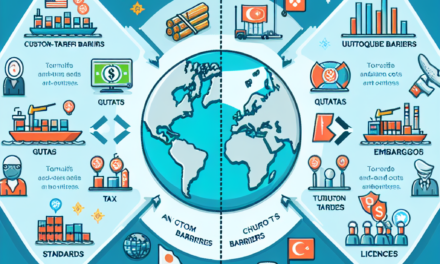“Unlocking Global Market Trends: Your Gateway to Intercontinental Exchange Insights”
Introduction
Intercontinental Exchange Inc. (ICE) stands as a pivotal entity in the global financial landscape, renowned for its comprehensive network of exchanges and clearing houses. This analysis delves into the market insights surrounding ICE, exploring its strategic initiatives, financial performance, and competitive positioning. As a leading operator of regulated exchanges, including the New York Stock Exchange, ICE plays a crucial role in facilitating the trading of a diverse array of asset classes, from commodities and derivatives to equities and fixed income. The company’s robust technological infrastructure and innovative data services further enhance its market influence, enabling participants to navigate complex financial environments with precision. This examination provides a detailed overview of ICE’s operational dynamics, growth prospects, and the broader market trends shaping its trajectory in the ever-evolving financial sector.
Overview Of Intercontinental Exchange Inc.’s Market Position
Intercontinental Exchange Inc. (ICE) stands as a formidable entity in the global financial markets, renowned for its comprehensive array of services that span across various asset classes. Established in 2000, ICE has grown exponentially, both organically and through strategic acquisitions, to become a pivotal player in the financial services industry. Its market position is underpinned by its robust infrastructure, innovative technology, and a diversified portfolio that includes exchanges, clearing houses, and data services.
At the core of ICE’s market dominance is its ownership and operation of 12 regulated exchanges and marketplaces, including the New York Stock Exchange (NYSE), which is arguably the most iconic stock exchange in the world. This acquisition in 2013 significantly bolstered ICE’s market presence, providing it with a strong foothold in equities trading. Moreover, ICE’s exchanges facilitate trading in a wide range of asset classes, including commodities, fixed income, and derivatives, thereby catering to a diverse clientele and mitigating risks associated with market volatility.
Transitioning from its exchange operations, ICE’s clearing services further enhance its market position. The company operates six central clearing houses that provide risk management and post-trade services, ensuring the integrity and stability of financial markets. These clearing houses are strategically located across the globe, allowing ICE to offer localized services while maintaining a global reach. This extensive network not only strengthens ICE’s market position but also instills confidence among market participants, who rely on its robust risk management capabilities.
In addition to its exchange and clearing operations, ICE’s data services division plays a crucial role in its market strategy. The demand for high-quality, real-time financial data has surged in recent years, driven by the increasing complexity of financial markets and the need for informed decision-making. ICE Data Services addresses this demand by providing a comprehensive suite of data solutions, including pricing, analytics, and connectivity services. This division has become a significant revenue stream for ICE, reflecting the growing importance of data in the financial ecosystem.
Furthermore, ICE’s commitment to innovation and technology is evident in its continuous investment in cutting-edge solutions. The company leverages advanced technologies such as artificial intelligence and machine learning to enhance its trading platforms and data services. This focus on innovation not only improves operational efficiency but also positions ICE as a forward-thinking leader in the industry, capable of adapting to the ever-evolving market landscape.
Moreover, ICE’s strategic acquisitions have been instrumental in solidifying its market position. By acquiring complementary businesses, ICE has expanded its product offerings and geographic reach, thereby enhancing its competitive edge. These acquisitions have also enabled ICE to enter new markets and diversify its revenue streams, further strengthening its financial resilience.
In conclusion, Intercontinental Exchange Inc.’s market position is a testament to its strategic vision, operational excellence, and commitment to innovation. Its diversified portfolio, encompassing exchanges, clearing services, and data solutions, provides a solid foundation for sustained growth and market leadership. As the financial markets continue to evolve, ICE’s ability to adapt and innovate will be crucial in maintaining its competitive advantage and delivering value to its stakeholders. Through its comprehensive approach and strategic initiatives, ICE remains well-positioned to navigate the complexities of the global financial landscape.
Key Financial Metrics And Performance Trends
Intercontinental Exchange Inc. (ICE) has established itself as a formidable player in the global financial markets, offering a diverse range of services that include the operation of exchanges, clearing houses, and data services. To understand the company’s financial health and performance trends, it is essential to delve into its key financial metrics, which provide a comprehensive view of its operational efficiency and market position.
One of the primary indicators of ICE’s financial performance is its revenue growth. Over recent years, the company has demonstrated a consistent upward trajectory in its revenue figures, driven by strategic acquisitions and the expansion of its data services segment. This growth is indicative of ICE’s ability to adapt to the evolving needs of the financial markets, as well as its commitment to innovation. Furthermore, the company’s diverse revenue streams, which include transaction and clearing fees, data services, and listings, contribute to its financial stability and resilience against market volatility.
In addition to revenue growth, profitability metrics such as operating margin and net profit margin are crucial in assessing ICE’s financial performance. The company has maintained robust operating margins, reflecting its efficient cost management practices and the scalability of its business model. This efficiency is further underscored by its net profit margin, which has remained strong despite fluctuations in market conditions. Such financial discipline not only enhances shareholder value but also positions ICE favorably against its competitors.
Another critical aspect of ICE’s financial analysis is its return on equity (ROE), which measures the company’s ability to generate profits from shareholders’ investments. ICE has consistently delivered impressive ROE figures, underscoring its effective use of equity capital to drive growth and profitability. This performance metric is particularly significant for investors, as it highlights the company’s capacity to provide attractive returns on their investments.
Moreover, ICE’s balance sheet strength is reflected in its liquidity and solvency ratios. The company’s current ratio and quick ratio indicate its ability to meet short-term obligations, while its debt-to-equity ratio provides insights into its long-term financial stability. ICE has managed to maintain a healthy balance between debt and equity, ensuring that it can leverage growth opportunities without compromising its financial health.
Transitioning to performance trends, ICE has capitalized on the increasing demand for data and analytics in the financial sector. The company’s data services segment has become a significant revenue driver, as market participants seek comprehensive and real-time information to make informed decisions. This trend is expected to continue, given the growing importance of data in shaping market strategies and risk management practices.
Furthermore, ICE’s strategic acquisitions have played a pivotal role in enhancing its market position and expanding its service offerings. By integrating complementary businesses and technologies, ICE has been able to broaden its customer base and enter new markets. These acquisitions not only contribute to revenue growth but also enhance the company’s competitive edge in the global financial landscape.
In conclusion, Intercontinental Exchange Inc.’s key financial metrics and performance trends paint a picture of a company that is well-positioned for sustained growth and success. Its robust revenue growth, strong profitability, impressive return on equity, and strategic focus on data services and acquisitions underscore its resilience and adaptability in a dynamic market environment. As ICE continues to innovate and expand its offerings, it remains a compelling entity for investors and stakeholders seeking exposure to the financial markets.
Impact Of Regulatory Changes On Intercontinental Exchange Inc.
Intercontinental Exchange Inc. (ICE), a leading operator of global exchanges and clearing houses, as well as a provider of data and listings services, has been significantly impacted by regulatory changes in recent years. These changes have reshaped the landscape in which ICE operates, influencing its strategic decisions and operational dynamics. Understanding the impact of these regulatory shifts is crucial for stakeholders and investors who are keen on assessing ICE’s future trajectory.
To begin with, the regulatory environment for financial markets has become increasingly stringent, particularly in the aftermath of the 2008 financial crisis. Governments and regulatory bodies worldwide have implemented a series of reforms aimed at enhancing market transparency, reducing systemic risk, and protecting investors. For ICE, these regulatory changes have presented both challenges and opportunities. On one hand, compliance with new regulations has necessitated substantial investments in technology and human resources to ensure adherence to the evolving legal framework. This has inevitably led to increased operational costs, which could potentially impact profit margins.
However, on the other hand, these regulatory changes have also opened up new avenues for growth. For instance, the demand for transparent and efficient trading platforms has surged, as market participants seek to comply with regulatory requirements. ICE, with its robust infrastructure and comprehensive suite of services, is well-positioned to capitalize on this demand. The company’s ability to offer reliable and compliant trading solutions has not only strengthened its market position but also attracted a broader client base, thereby driving revenue growth.
Moreover, the introduction of regulations such as the European Market Infrastructure Regulation (EMIR) and the Dodd-Frank Act in the United States has underscored the importance of clearing services. These regulations mandate the clearing of certain over-the-counter (OTC) derivatives through central counterparties, a service that ICE provides. Consequently, ICE has experienced an uptick in its clearing volumes, which has contributed positively to its financial performance. This trend is likely to continue as regulatory bodies persist in their efforts to mitigate counterparty risk in the derivatives market.
In addition to these factors, regulatory changes have also influenced ICE’s strategic acquisitions and partnerships. The company has been proactive in expanding its capabilities and geographic reach through targeted acquisitions, aligning with regulatory trends. For example, ICE’s acquisition of Interactive Data Corporation (IDC) was a strategic move to enhance its data services, a segment that has gained prominence due to regulatory emphasis on data transparency and accuracy. By integrating IDC’s offerings, ICE has bolstered its position as a leading provider of financial data, catering to the growing needs of market participants for high-quality information.
Furthermore, regulatory changes have prompted ICE to innovate and adapt its product offerings. The company has introduced new products and services that align with regulatory requirements, such as sustainable finance solutions and environmental, social, and governance (ESG) data services. These initiatives not only address the evolving needs of clients but also position ICE as a forward-thinking entity in the financial markets.
In conclusion, while regulatory changes have posed certain challenges for Intercontinental Exchange Inc., they have also presented significant opportunities for growth and innovation. By strategically navigating the regulatory landscape, ICE has managed to enhance its market position and expand its service offerings. As the regulatory environment continues to evolve, ICE’s ability to adapt and innovate will be crucial in maintaining its competitive edge and driving long-term success.
Technological Innovations And Their Influence On Market Operations
Intercontinental Exchange Inc. (ICE) has long been a pivotal player in the global financial markets, renowned for its innovative approach to market operations. As technology continues to evolve at a rapid pace, ICE has consistently leveraged these advancements to enhance its market infrastructure, thereby influencing the broader financial landscape. The integration of cutting-edge technology into market operations has not only streamlined processes but also introduced new efficiencies and opportunities for market participants.
To begin with, the adoption of advanced data analytics has been a cornerstone of ICE’s technological strategy. By harnessing the power of big data, ICE has been able to provide market participants with deeper insights into market trends and behaviors. This data-driven approach allows for more informed decision-making, enabling traders and investors to anticipate market movements with greater accuracy. Furthermore, the use of sophisticated algorithms and machine learning models has facilitated the development of predictive analytics tools, which are now integral to ICE’s market operations.
In addition to data analytics, the implementation of blockchain technology has also had a profound impact on ICE’s market operations. Blockchain, with its decentralized and immutable nature, offers enhanced security and transparency, which are critical in financial transactions. ICE’s exploration of blockchain technology has led to the development of more secure and efficient trading platforms, reducing the risk of fraud and ensuring the integrity of transactions. This technological innovation has not only bolstered trust among market participants but has also paved the way for the introduction of new financial products, such as digital assets and cryptocurrencies.
Moreover, the rise of artificial intelligence (AI) has further transformed ICE’s market operations. AI technologies have been instrumental in automating routine tasks, thereby increasing operational efficiency and reducing costs. For instance, AI-driven trading systems can execute trades at lightning speed, capitalizing on market opportunities that may be missed by human traders. Additionally, AI has enhanced risk management practices by providing real-time analysis of market conditions and identifying potential risks before they materialize. This proactive approach to risk management is crucial in maintaining market stability and protecting investors’ interests.
Another significant technological innovation that has influenced ICE’s market operations is the development of cloud computing. By migrating its infrastructure to the cloud, ICE has achieved greater scalability and flexibility in its operations. Cloud computing enables ICE to handle large volumes of data and transactions with ease, ensuring seamless market operations even during periods of high volatility. Furthermore, the cloud provides a platform for continuous innovation, allowing ICE to rapidly deploy new services and features to meet the evolving needs of market participants.
In conclusion, technological innovations have played a pivotal role in shaping the market operations of Intercontinental Exchange Inc. Through the strategic integration of data analytics, blockchain, artificial intelligence, and cloud computing, ICE has not only enhanced its operational efficiency but also set new standards for the financial industry. These advancements have enabled ICE to offer more secure, transparent, and efficient trading platforms, ultimately benefiting market participants and contributing to the overall stability of the financial markets. As technology continues to advance, ICE remains committed to leveraging these innovations to drive further improvements in market operations and maintain its position as a leader in the global financial markets.
Competitive Landscape: Intercontinental Exchange Inc. Vs. Peers
In the ever-evolving financial markets, Intercontinental Exchange Inc. (ICE) stands as a formidable player, consistently demonstrating its prowess in the competitive landscape. As a leading operator of global exchanges and clearing houses, ICE has carved out a significant niche, but it faces stiff competition from other industry giants. To understand ICE’s position relative to its peers, it is essential to examine the various facets that contribute to its competitive edge.
Firstly, ICE’s expansive portfolio of exchanges, including the New York Stock Exchange (NYSE), provides it with a robust platform to facilitate a wide range of financial transactions. This extensive network not only enhances its market reach but also offers a diversified revenue stream, reducing dependency on any single market segment. In contrast, some of its competitors, while strong in specific areas, may not possess the same breadth of offerings. For instance, CME Group, another major player, is renowned for its derivatives markets but does not have the same level of equity market exposure as ICE.
Moreover, ICE’s strategic acquisitions have played a pivotal role in bolstering its competitive position. The acquisition of Interactive Data Corporation and Ellie Mae, among others, has allowed ICE to expand its data services and mortgage technology solutions, respectively. These moves have not only diversified its business model but also provided synergies that enhance operational efficiency. In comparison, Nasdaq, a key competitor, has also pursued acquisitions, yet ICE’s strategic focus on integrating these acquisitions into its broader ecosystem has arguably given it an edge in terms of creating value.
In addition to its strategic acquisitions, ICE’s technological innovation is a critical factor in its competitive standing. The company has consistently invested in cutting-edge technology to improve trading efficiency and enhance customer experience. Its focus on technology is evident in its development of the ICE Data Services platform, which offers comprehensive data solutions to market participants. This commitment to innovation is mirrored by its peers, such as Nasdaq, which has also made significant strides in technology. However, ICE’s ability to seamlessly integrate technology across its diverse operations sets it apart.
Furthermore, regulatory compliance and risk management are areas where ICE excels, providing it with a competitive advantage. The company’s robust risk management framework and adherence to regulatory standards ensure the integrity and stability of its markets. This is particularly important in an industry where trust and reliability are paramount. While competitors like CME Group also prioritize these aspects, ICE’s comprehensive approach to risk management, coupled with its global reach, enhances its reputation as a reliable market operator.
Despite these strengths, ICE faces challenges that could impact its competitive position. The rapidly changing regulatory environment and technological advancements require constant adaptation. Additionally, the increasing competition from fintech companies and alternative trading platforms presents a potential threat. However, ICE’s proactive approach to innovation and its strategic focus on expanding its service offerings position it well to navigate these challenges.
In conclusion, Intercontinental Exchange Inc. maintains a strong competitive position in the financial markets through its diversified portfolio, strategic acquisitions, technological innovation, and robust risk management practices. While it faces competition from established peers like CME Group and Nasdaq, as well as emerging fintech players, ICE’s comprehensive strategy and commitment to excellence ensure its continued relevance and success in the industry. As the financial landscape continues to evolve, ICE’s ability to adapt and innovate will be crucial in maintaining its competitive edge.
Strategic Acquisitions And Their Market Implications
Intercontinental Exchange Inc. (ICE) has long been a formidable player in the global financial markets, renowned for its innovative approach and strategic foresight. A key component of its growth strategy has been its adeptness at strategic acquisitions, which have significantly shaped its market position and expanded its influence across various sectors. By acquiring companies that complement its existing operations, ICE has not only diversified its portfolio but also enhanced its competitive edge in the ever-evolving financial landscape.
One of the most notable acquisitions by ICE was the purchase of the New York Stock Exchange (NYSE) in 2013. This acquisition was a pivotal moment for ICE, as it allowed the company to gain a strong foothold in the equities market, complementing its already robust presence in the derivatives and commodities sectors. The integration of NYSE into ICE’s operations exemplified the company’s ability to leverage synergies between different market segments, thereby creating a more comprehensive and versatile trading platform. This move not only solidified ICE’s position as a leader in global exchanges but also provided it with a broader customer base and increased market visibility.
In addition to expanding its reach in traditional financial markets, ICE has strategically ventured into data services and technology through acquisitions. The acquisition of Interactive Data Corporation (IDC) in 2015 marked a significant step in this direction. By integrating IDC’s extensive data offerings, ICE enhanced its ability to provide valuable market data and analytics to its clients. This acquisition underscored the growing importance of data in financial markets and highlighted ICE’s commitment to staying ahead of industry trends. As data-driven decision-making becomes increasingly crucial, ICE’s expanded capabilities in this area have positioned it as a key player in the financial technology space.
Moreover, ICE’s acquisition strategy has not been limited to established markets. The company has also shown a keen interest in emerging sectors, such as digital assets. The launch of Bakkt, a digital asset platform, following the acquisition of a majority stake in the company, demonstrated ICE’s forward-thinking approach. By entering the digital asset space, ICE has tapped into a rapidly growing market, positioning itself to capitalize on the increasing interest in cryptocurrencies and blockchain technology. This move reflects ICE’s ability to adapt to changing market dynamics and its willingness to explore new opportunities beyond traditional financial markets.
The implications of ICE’s strategic acquisitions extend beyond its immediate business operations. These acquisitions have also influenced the broader market landscape by driving consolidation and fostering innovation. As ICE continues to integrate its acquisitions, it sets a precedent for other companies in the industry, encouraging them to pursue similar strategies to remain competitive. Furthermore, ICE’s focus on technology and data services has spurred advancements in these areas, benefiting the financial industry as a whole.
In conclusion, Intercontinental Exchange Inc.’s strategic acquisitions have played a crucial role in shaping its market position and driving its growth. By carefully selecting acquisitions that align with its long-term objectives, ICE has successfully expanded its reach, diversified its offerings, and enhanced its technological capabilities. As the financial markets continue to evolve, ICE’s strategic approach to acquisitions will likely remain a key factor in its ongoing success, influencing both its trajectory and the broader industry landscape.
Future Growth Prospects And Market Opportunities For Intercontinental Exchange Inc
Intercontinental Exchange Inc. (ICE) stands as a pivotal player in the global financial markets, renowned for its comprehensive array of services that span across trading, clearing, and data solutions. As the financial landscape continues to evolve, ICE is strategically positioned to capitalize on emerging opportunities and drive future growth. The company’s robust infrastructure and innovative approach provide a solid foundation for navigating the complexities of the modern market environment.
One of the key growth prospects for ICE lies in its ability to leverage technological advancements to enhance its service offerings. The increasing reliance on data analytics and artificial intelligence in financial markets presents a significant opportunity for ICE to expand its data services. By integrating advanced analytics into its platforms, ICE can offer clients deeper insights and more efficient trading solutions. This not only enhances customer satisfaction but also strengthens ICE’s competitive edge in a rapidly evolving industry.
Moreover, the global push towards sustainable finance and the growing emphasis on environmental, social, and governance (ESG) criteria present another avenue for growth. ICE has already made strides in this area by developing ESG-related indices and data services. As investors increasingly prioritize sustainability, ICE’s ability to provide comprehensive ESG data and analytics positions it well to meet the rising demand. This strategic focus not only aligns with global trends but also reinforces ICE’s commitment to fostering a more sustainable financial ecosystem.
In addition to technological and ESG advancements, ICE’s strategic acquisitions play a crucial role in its growth trajectory. The company’s history of acquiring complementary businesses has enabled it to expand its market reach and diversify its revenue streams. By integrating these acquisitions into its existing operations, ICE can offer a more comprehensive suite of services to its clients. This approach not only enhances operational efficiency but also creates synergies that drive long-term growth.
Furthermore, the globalization of financial markets presents a wealth of opportunities for ICE to expand its international footprint. As emerging markets continue to develop and mature, the demand for sophisticated financial infrastructure and services is expected to rise. ICE’s established presence in key global markets positions it well to capture this demand and facilitate cross-border trading and investment. By leveraging its global network, ICE can provide clients with seamless access to international markets, thereby enhancing its value proposition.
However, it is important to acknowledge the challenges that ICE may face in its pursuit of growth. Regulatory changes and geopolitical uncertainties can impact market dynamics and influence the company’s operations. To mitigate these risks, ICE must remain agile and adaptable, continuously monitoring the regulatory landscape and adjusting its strategies accordingly. By maintaining a proactive approach, ICE can navigate potential challenges and continue to thrive in a dynamic environment.
In conclusion, Intercontinental Exchange Inc. is well-positioned to capitalize on future growth prospects and market opportunities. Through technological innovation, a focus on sustainable finance, strategic acquisitions, and global expansion, ICE is poised to enhance its market presence and drive long-term success. While challenges remain, the company’s strategic initiatives and robust infrastructure provide a strong foundation for navigating the complexities of the financial markets. As ICE continues to evolve and adapt, it is likely to remain a key player in shaping the future of global finance.
Q&A
1. **What is Intercontinental Exchange Inc.?**
Intercontinental Exchange Inc. (ICE) is a global company that operates exchanges, clearing houses, and provides data services for financial and commodity markets.
2. **What are the main business segments of ICE?**
ICE operates primarily in three segments: Exchanges, Fixed Income and Data Services, and Mortgage Technology.
3. **How does ICE generate revenue?**
ICE generates revenue through transaction fees, data services, and technology solutions, particularly in trading and clearing services across various asset classes.
4. **What is ICE’s competitive advantage?**
ICE’s competitive advantage lies in its diverse portfolio of exchanges, robust data services, and advanced technology platforms, which provide comprehensive solutions for market participants.
5. **What are the recent growth strategies of ICE?**
Recent growth strategies include expanding its data services, enhancing its technology offerings, and strategic acquisitions to broaden its market reach and capabilities.
6. **What are the risks associated with investing in ICE?**
Risks include regulatory changes, market volatility, competition from other exchanges and data providers, and technological disruptions.
7. **How has ICE performed financially in recent years?**
ICE has shown consistent financial performance with steady revenue growth, driven by its diversified business model and strategic acquisitions, although specific financial metrics would require up-to-date data analysis.
Conclusion
Intercontinental Exchange Inc. (ICE) has demonstrated robust growth and adaptability in the financial markets sector, driven by its diversified portfolio of exchanges, clearing houses, and data services. The company’s strategic acquisitions and investments in technology have strengthened its competitive position, enabling it to capitalize on the increasing demand for data analytics and risk management solutions. ICE’s focus on expanding its digital asset offerings and enhancing its environmental, social, and governance (ESG) initiatives further positions it for future growth. However, the company must navigate regulatory challenges and market volatility to sustain its momentum. Overall, ICE’s strong market presence and innovative approach suggest a positive outlook, with potential for continued expansion and value creation for shareholders.





